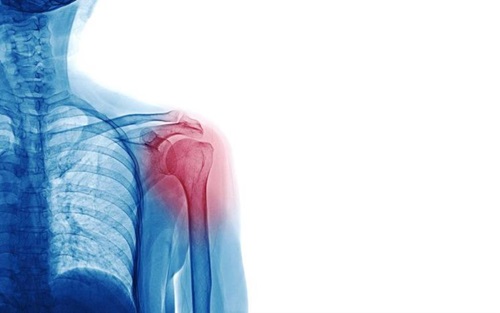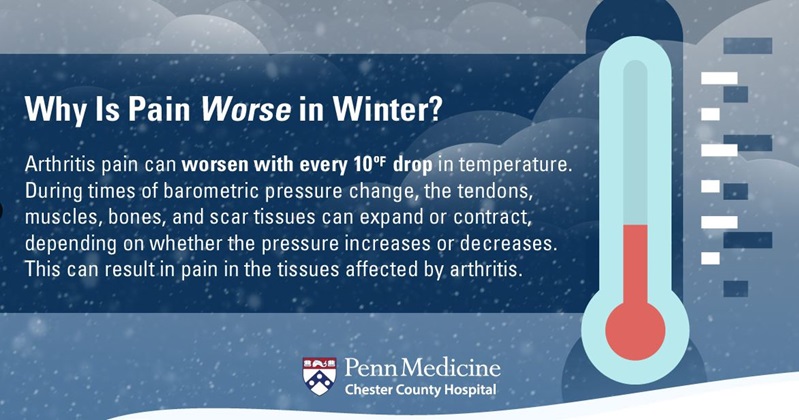
When you were growing up, did you ever hear your grandmother say, "There's a storm coming. I can feel it in my bones?"
As a child, you may have thought that was ridiculous. As an adult with arthritis, you may think, "Sorry for laughing, Granny."
Arthritis isn't a single disease — it's actually a blanket term for joint diseases. It can cause pain, swelling, stiffness, and a decreased range of motion.
If you have arthritis, you may notice that your pain can change along with the weather. The research is still out on why this may occur, or if there's even a 100% provable connection at all. However, the anecdotal evidence from people with arthritis is clear: Certain weather conditions can make arthritic pain better or worse.
Here are 5 ways that arthritis and the weather are connected.
1. Pain May Improve During the Summer
Summertime heat can be a mixed bag.
On one hand, humidity can make arthritis pain worse. And oftentimes, summer and humidity are pretty much synonymous.
However, summer humidity isn't quite as bad as humidity in winter. The effect of humidity — moisture in the air — on arthritis pain is worse on wet winter days.
For many people with arthritis, summer is a much-needed reprieve. Even when there is some humidity, arthritis pain tends to be better on warmer, sunnier days.
And if there's no humidity? You're probably in luck. Dry weather can be much better for arthritis pain.
2. But Pain May Get Worse During Rainy Days and Winter Blues
Barometric pressure — in simple terms — is the weight of air. The weight increases with good weather (e.g., sun, warmth), and it decreases with bad weather (e.g., storms, heavy wind).
During times of rain and snow, the temperature drops and barometric pressure decreases. This can cause fluid in the joints to thicken, which makes them stiffer. If you have stiff joints, you may be more sensitive to pain during movement, making arthritis pain seem worse.

3. Physical Activity — or Lack Thereof — Shares Part of the Blame
Joint-friendly physical activity — such as walking, biking, water aerobics, or dancing — is a known way to ease arthritis pain.
For many people, weather plays a key role in how much physical activity they’re getting.
When it's nice out, you're bike riding and walking. But when it's cold or rainy, you might just want to curl up in bed all day.
Staying in on one lousy day might not make a huge difference, especially if you have a milder case of arthritis. However, longer stretches of bad weather where you don't get enough physical activity can start to make pain worse.
4. Weather Affects the Mood-Pain
Arthritis pain and emotions are connected. When you're happier, you tend to have less pain, and vice versa. If you have clinical depression — a diagnosable condition where you have depressive symptoms like a sad mood or loss of interest for longer than 2 weeks — you're even more likely to have your emotions and mood affect your pain levels.
That's where weather comes into play.
It's common for the weather to affect your mood. Rainy days can put you in a gloomy funk, while sunny days can put a smile on your face.
For some people, it's a little more severe. Seasonal affective disorder (SAD) is a specific type of depression that comes and goes with the seasons. Depression usually begins in late fall or early winter and goes away during spring and summer. It's not extremely common, but it's not uncommon, either. Every year, about 5% of Americans experience seasonal depression.
It doesn't matter if you have SAD or are sad — bad weather can cause a bad mood, which can increase pain. And nice weather can make you happy, causing less pain.
5. There's More to the Weather-Arthritis Connection than Pain
There is something else that's very important to keep in mind regarding the weather and arthritis: flu season.
Flu season is typically considered to last from early fall through late winter or early spring. It tends to peak in the US between December and February. The flu and arthritis are linked in several ways:
- People with arthritis have a greater chance of getting the flu. Both the disease itself and certain treatments, such as prescribed corticosteroids, can lower the immune system's ability to fight germs.
- Arthritis increases the risk of having serious complications from the flu, such as pneumonia. Again, this may be due to a weak immune system.
- Some of the main flu symptoms are body aches and pains. If you already have arthritic pain, these symptoms can feel even worse.
One of the most important things you can do is get your flu shot. It's the most effective way to prevent the flu. And despite certain myths floating around, the flu vaccine is perfectly safe for people with arthritis.
A Note About Arthritis and Flu Shots
The Centers for Disease Control and Prevention (CDC) recommend getting the shot before peak flu season, in early October. However, you can get it at any time throughout the flu season, and it will still be beneficial.
There is one special consideration for people with arthritis: When getting vaccinated against the flu, you should get a shot, rather than the nasal spray. The shot only contains an inactive flu virus, which means it cannot give you the flu. But the nasal spray version does contain some of the live virus. While this doesn't affect many people who don't have arthritis, it can be risky for people who have compromised immune systems — and that's not uncommon among people with arthritis.
Weather affects everyone differently. It may seem to make all the difference in the world, or it might not affect you at all. If you do notice that your pain changes with the weather, you don't need to pack up and move to Florida just yet. Talk to your physician about ways to manage pain during times when weather impacts your pain.
Does your arthritis pain change with the weather? Make an appointment with one of our rheumatologists to learn about your treatment options. Call 800-789-PENN (7366) to schedule an appointment with a Chester County Hospital provider near you.